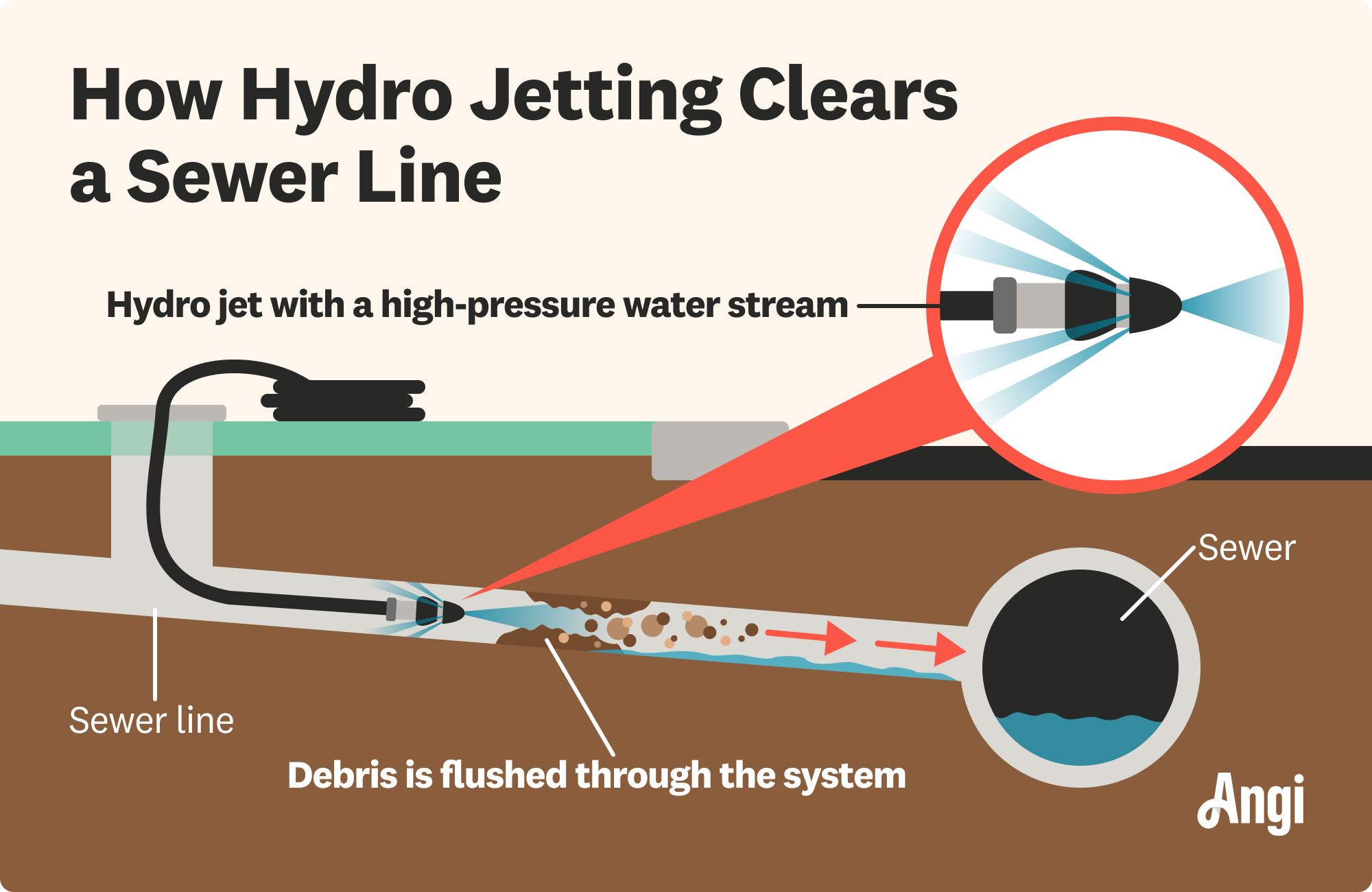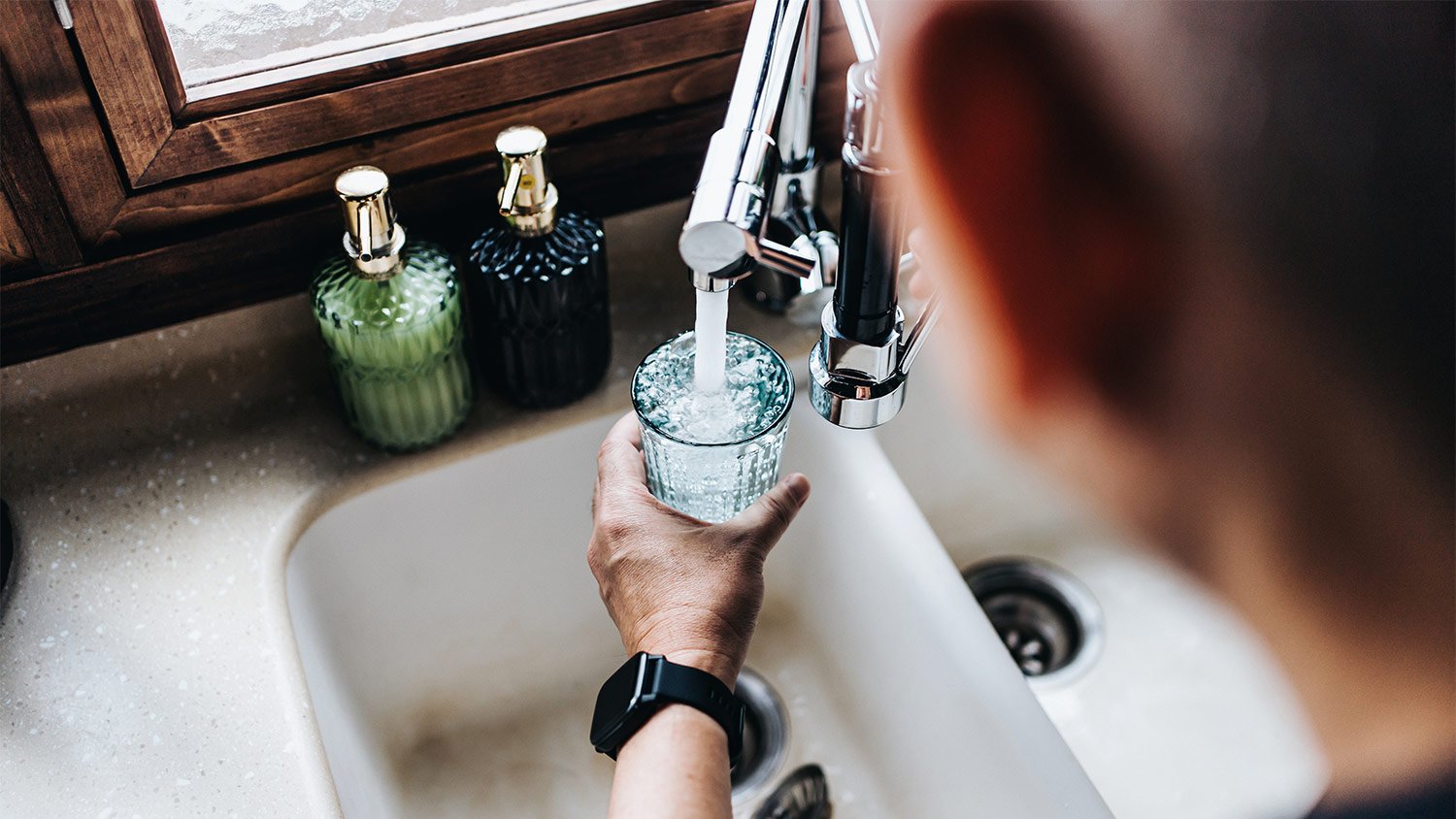
Discover the cost to replace drain pipes in a house, including average prices, key factors, and tips to save on your plumbing project.
Hydro jetting is one possible solution to blockages in a plumbing system or sewer lines


If you’ve lost count of how many times you’ve poured drain cleaner down your sink and your efforts to unclog your plumbing have been unsuccessful, you may have to call a reputable plumber to the scene. Not only will significant debris buildup decrease your water pressure, but it can stick to the walls of your pipes and cause cracks to form if left untreated. Here’s how hydro jetting can help you get your system clean.
Hydro jetting is the process of clearing clogs and debris buildup on pipe walls throughout the plumbing system, by sending high pressure water jets through the pipes. This intense cleaning helps prevent the likelihood of future clogs and backups as the water scours the pipe walls to remove grease, food particles, mineral scale, debris, and, in some cases, tree roots.
When taking on this project, expect questions only a pro can answer. With our network of local pros, you'll get the job done and your questions answered—without the hassle and stress of doing it yourself.

First, your plumber will inspect your system to find the ideal spot to insert a hose and begin pumping the water. This high water pressure will force the material blocking the pipes to flow down the sewer system and out of your home’s pipes.
But hydro jetting isn't as simple as sticking the hose down the drain and firing up the hydro jetting machine. If you get hydro jetting wrong, you can break your pipes and seriously damage your plumbing system, resulting in a hefty plumbing repair bill. For that reason, it’s best to leave this project to a local professional plumber who has the right tools and experience to complete this job safely.
Here’s how hydro jetting works and what you can expect from the service, should you decide this process is the solution you need.

The plumber will perform a video inspection of the system to locate any major blockages and areas of heavy buildup. They'll also inspect the pipes to establish whether they can withstand hydro jetting. In some cases, very old or weak pipes cannot tolerate the intense pressure.
If your pipes aren't suitable for hydro jetting, they'll snake the pipes (a less intense method—more on that below) or use an auger to break up any tree roots that have moved dangerously close to your plumbing system. If your plumber determines hydro jetting is not safe considering the condition of your pipes, you may want to consider investing in new, more efficient piping if you are dealing with frequent clogs and drainage issues.
Once access points are located, the plumber will drop hoses into your pipes and activate the hydro jetting machine. This machine has the power to pressurize the water up to 35,000 psi, but the plumber will adjust the pressure based on the needs of your system.
As the water runs, the hose moves through the plumbing system, scouring the pipes free of buildup and heavy clogs. As the hydro jet dislodges the debris from the pipe walls, the debris travels downward (thanks to gravity) and is flushed safely out of the plumbing system.
Hydro jetting has several advantages over traditional drain cleaning methods, and it can be especially good for stubborn clogs. The high-pressure water technique effectively cleans your entire plumbing system, but it’s often gentler on your pipes than many chemical alternatives.
Here are the main benefits of hydro jetting:
Complete cleaning: Hydro jetting thoroughly scours the entire pipe interior, removing buildup and preventing clogs from quickly reforming.
No harsh chemicals: Hydro jetting only uses water, so it’s an environmentally-friendly option that won’t introduce potentially harmful chemicals into your home’s plumbing system.
Effective against various materials: Hydro jetting can clear different types of blockages, including grease, mineral deposits, hair, and tree roots in some cases.
Hydro jetting also provides longer-lasting results than traditional methods because it removes residue completely from pipe walls instead of just breaking through the clogs.
Yes, in some cases, hydro jetting can effectively clear tree root penetrations. The plumber will refer to the line inspection video to assess the damage (or potential damage) the roots have caused your system. If damage is minimal, hydro jetting could be a viable option.
If, however, the damage is extensive or the waterproofing is no longer intact, hydro jetting could make matters worse, so you'll need to enlist the help of a local tree maintenance company to cut up and remove the roots without causing further damage to the pipes.
Hydro jetting cleans pipes and removes clogs more comprehensively than drain snaking by aggressively flushing the system. It also doesn’t use chemical drain cleaners, only water.
Snaking punctures clogs and breaks them apart, but it doesn't reach the pipe walls to grab super stubborn debris. However, snaking is often the chosen method for older homes or homes with weakened pipes because it’s less intense and doesn't apply pressure to the pipes as hydro jetting does.
Hydro jetting can remove all kinds of debris in pipes, including:
Hair clogs
Mineral deposits
Grease and fat deposits
Food deposits
Silt
Sand
Tree roots (in some cases)
There are a few telltale signs that your system needs hydro jetting:
Your plumbing system backs up regularly
Your bathroom or kitchen sink drain smells
You hear noisy or gurgling pipes
You get a lot of clogs, even though you’re mindful of what you put down your drains
Your drains run slow
If you're in any doubt about whether you need a hydro jetting service, it's worth calling a local plumber and asking for a video line inspection. The cost of a sewer line camera inspection is insignificant compared with the cost of replacing your sewer line.
Hydro jetting costs between $350 and $600, with an average of $475. Severe clogs and complex work can run upward of $1,200. This is not a DIY-friendly project, so you’ll need to hire a plumber or drain cleaner near you to clean your pipes with a hydro jet.
From average costs to expert advice, get all the answers you need to get your job done.

Discover the cost to replace drain pipes in a house, including average prices, key factors, and tips to save on your plumbing project.

Garbage disposal clogs can stop the flow of your kitchen. Follow these simple tips to unclog your disposal and get it running in no time.

How do I drain the water lines in my house? This guide will walk you through it in five simple steps, along with tips to prevent damage to your plumbing.

Clogged drains are a pain and can be persistent if you don’t deal with the blockage. Use this guide on how to snake a drain to save money and DIY a solution.

Getting something that fell down the sink drain can be frustrating, especially if it holds sentimental value. This step-by-step guide shows how to get something out of the sink without taking it apart.

Baking soda and vinegar are like two peas in a pod when it comes to clogs. Keep reading to learn how to unclog a sink with baking soda and vinegar.